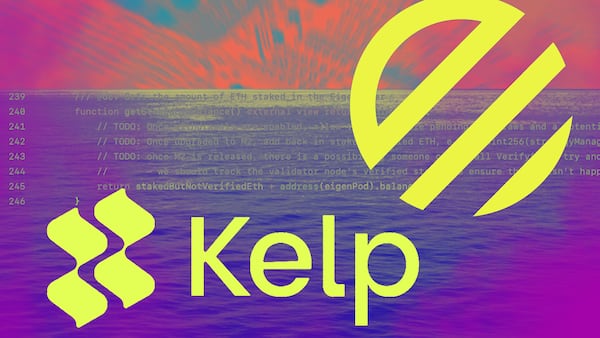- Liquid staking protocols are pulling out all the stops to attract deposits.
- Mantle's liquid staking protocol currently offers an annual Ether staking yield of over 7%, subsidised by the yield on its own staked Ether.
- Other liquid staking protocols are taking different approaches.
In the competitive sector of Ether liquid staking, it’s difficult for newer entrants to stand out.
For the past three years, Lido, the leading liquid staking protocol with over $29 billion of deposits, has dominated the sector. As one of the first liquid staking protocols on the market, Lido is established and battle-tested.
Its liquid staking token — stETH — is also the most traded liquid staking token on decentralised exchanges.
In an attempt to chip away at Lido’s dominance, smaller players are coming up with new ways to lure in investors.
One such project is Mantle Network, an Ethereum layer 2 blockchain that has also launched its own liquid staking protocol. It advertises an annual Ether staking yield of over 7% — almost double the 3.8% Lido offers.
But to achieve the high yield, Mantle subsidises staking rewards using the staked Ether in its own treasury. This means Mantle is giving away the staking rewards on its Ether to keep the yield on its liquid staking token — called mETH — above 7%.
“Users love the yield,” 0xVEER, Mantle’s pseudonymous head of business development, told DL News.
The hope is that by subsidising yields, Mantle can catch up to Lido and carve out a slice of the $37 billion Ether liquid staking market for itself.
But it’s not alone — other liquid staking protocols, both old and new, are banking on a variety of strategies to increase their share of the market.
Mantle’s mETH success
According to 0xVEER, Mantle plans to keep subsidising the mETH yields until April 1 as part of its “mETH Double Dose Drive” campaign.
“The ticker symbol has also become a bit of a meme for obvious reasons, which certainly helps with creating some buzz and getting people to talk about mETH,” 0xVEER said.
And DeFi users are piling in. Over the past month, the amount of Ether staked through Mantle has jumped 65%. The protocol now controls over $1.5 billion worth of Ether, or around 3.8% of all Ether staked through liquid staking protocols.
However, there are limitations to Mantle’s boosted mETH yields.
To ensure yields stay high, Mantle initially capped the supply of mETH to 250,000. The cap now sits at 520,420 mETH, of which 511,081 has already been minted, per the Mantle website.
With limited capacity, Mantle can’t keep subsidising the mETH yield forever. At some point its campaign will stop, and there will be little it can do to stop stakers from going elsewhere.
One way Mantle is attempting to keep mETH stakers around is by “hinting at ecosystem incentives for those who bridge mETH from Ethereum to Mantle Network,” according to 0xVEER.
If users bridge their mETH over to Mantle, it may make it less likely they will convert it back into Ether.
Different approaches
Other liquid staking protocols use different strategies to compete.
Swell, a newer entrant to the liquid staking market, has promised a token airdrop. Stakers can earn points for staking Ether through the protocol and using the swETH liquid staking token in DeFi. Points will then be converted into tokens at a later date.
So far, Swell has attracted over $734 million worth of deposits with this strategy.
Rocket Pool, the second-biggest liquid staking protocol behind Lido with some $3.3 billion of deposits, focuses more on protocol design and ideology than on incentives.
It calls itself the leading decentralised liquid staking protocol because of its more than 3,500 individual validator operators. It lets users run their own validator nodes — software that helps process transactions on Ethereum in return for staking rewards — with just eight Ether, compared with the standard 32 Ether required.
Lido, on the other hand, has just 37 validator node operators.
Back over at Mantle, there are signs that maintaining a higher-than-average yield is becoming difficult. Although the protocol targets a 7.2% annual yield for mETH, it often falls short of that target. On February 19, the mETH token’s five-day average yield sat at 6.76%.
Still, that hasn’t stopped the token’s outsized growth compared with its peers — just two months after launch, it’s become the fourth-largest Ether liquid staking token.
Disclosure: The author of this article holds Swell’s swETH liquid staking token.
Tim Craig is DL News’ Edinburgh-based DeFi Correspondent. Reach out to him with tips at tim@dlnews.com.







